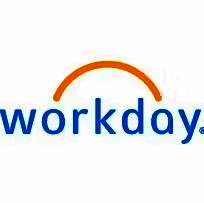Yes, revenue recognition software can be accessible from various devices and platforms. These software solutions are web-based and may be accessed from any internet-connected device, including a desktop computer, laptop, tablet, and smartphone. They are also compatible with other operating systems, including Windows, Mac, iOS, and Android. This enables for easy access to software and financial data from anywhere and at any time, making it ideal for enterprises on the go.
List of Best Revenue Recognition Software
Recurly is solution for maximizing your subscription revenue. With its recurring billing features, it simplifies the process of growing your business. By seamlessly managing subscriptions, this software improves customer engagement and increases rete...Read More Recurly
Accounting Seed - the premier accounting solution on the Salesforce platform. Easily manage and streamline your financial processes with our comprehensive features, including reporting, general ledger preparation, and order and project management. Sa...Read More Accounting Seed
RevLock is the leading revenue recognition solution designed to streamline ASC 606 compliance. Say farewell to complicated spreadsheets and costly mistakes with its seamless integration with your sales and billing systems. Enjoy accurate and timely r...Read More RevLock
ChargeOver is an innovative subscription management software that simplifies your payment procedures and optimizes your time. With reliable customer support features, you can effortlessly monitor your revenue and business progress with its advanced a...Read More ChargeOver
Experience the power of Ordway is a billing and revenue automation solution for thriving businesses. Simplify your pricing, invoicing, payment collection, and revenue recognition with this robust platform, eliminating the need for manual tasks. Effor...Read More Ordway
Trullion is a SaaS solution that uses cutting-edge AI technology to simplify accounting processes for CFOs, Accountants, and Auditors. With its seamless integration of structured and unstructured accounting data, Trullion eliminates the hassle of man...Read More Trullion
Leapfin is an advanced accounting automation software designed to streamline revenue recognition and compliance procedures. Its robust capabilities enable finance teams to effortlessly gather transaction data, reduce manual tasks, and accelerate end-...Read More Leapfin
TrueRev is a financial operations platform designed for B2B SaaS companies. Our powerful solution streamlines revenue recognition and billing, making tedious tasks a thing of the past. Fully compliant with ASC 606, TrueRev offers accurate and user-fr...Read More TrueRev
Chargebee RevRec is a Revenue Growth Management tool designed specifically for subscription businesses. With a global presence in over 233 countries and territories, Chargebee RevRec empowers businesses to acquire, grow, and retain customers efficien...Read More Chargebee RevRec
Piano VX is a platform that elevates the digital landscape for businesses. Boasting precise real-time capabilities and automated functions, this solution streamlines and optimizes the entire customer journey across all touchpoints and devices. Offeri...Read More Piano VX
Stripe Revenue - a solution for businesses to effortlessly manage billing, streamline payment processes, and support recurring revenue models. With its advanced capabilities, this tool helps increase retention, enhance authorization rates, and optimi...Read More Stripe Revenue
Flowrev is solution for effortless cost and revenue recognition in your financial reporting. Say goodbye to manual tasks and human errors with our seamless integration to QuickBooks Online and Xero. Simplify your processes and eliminate the use of sp...Read More Flowrev
Workday Financial Management is a cloud-based solution that streamlines financial management and accounting processes for businesses. Its robust set of tools simplifies tasks such as accounting, procurement, expense management, and reporting. This so...Read More Workday Financial Management
Learn More About Revenue Recognition Software
- What Is Revenue Recognition Software?
- What Are The Recent Trends In Revenue Recognition Software?
- Benefits Of Using Revenue Recognition Software
- Important Factors To Consider While Purchasing Revenue Recognition Software?
- What Are The Key Features To Look For In Revenue Recognition Software?
- Why Do Businesses Need Revenue Recognition Software?
- How Much Time Is Required To Implement Revenue Recognition Software?
- What Is The Level Of Customization Available In Revenue Recognition Software?
- Which Industries Can Benefit The Most From Revenue Recognition Software?
- Conclusion
What Is Revenue Recognition Software?
Revenue Recognition Software (RRS) is a specialized program that assists firms in reliably and effectively identifying, classifying, and recording revenue. It is an essential component of accounting software, especially for companies that adhere to the Generally Accepted Accounting Principles (GAAP) or the International Financial Reporting Standards (IFRS). Simply put, revenue recognition software automates the process of recognizing and tracking revenue from sales transactions.
This is critical for firms that use complex revenue recognition methods, such as contracts with multiple deliverables, variable pricing, and long-term projects. The software works by interacting with a company's existing financial systems and applying predetermined rules and criteria to determine when and how revenue should be recorded. This streamlines the revenue recognition process while eliminating the possibility of errors or discrepancies.
Aside from accuracy, revenue recognition software ensures transparency and conformity with accounting requirements. It enables firms to create precise reports and audit trails, which are critical for regulatory compliance and financial accountability. Revenue recognition software is beneficial to firms of all sizes, particularly those with high transaction volumes and complex revenue streams.
It not only improves financial reporting but also allows organizations to make more educated decisions based on accurate and current revenue data. When looking for revenue recognition software, you must examine the features and capabilities that are relevant to your company's needs. Look for a solution that has customized rules, real-time reporting, and connectivity with your existing systems to ensure seamless and precise revenue recognition.
What Are The Recent Trends In Revenue Recognition Software?
As businesses grapple with the difficulties of financial reporting and compliance, revenue recognition software has emerged as an indispensable tool for accurate and effective revenue management. In recent years, there have been numerous important trends in the development and application of revenue recognition software. One of the most important changes in revenue recognition software is the migration to cloud-based solutions.
Cloud-based software allows organizations to access the tools and data they require from any place, making it easier to handle revenue recognition processes remotely. This is especially critical given the global epidemic, as remote work has become the new standard. Another development in revenue recognition software is an emphasis on automation and integration.
As businesses deal with massive amounts of data, there is an increasing demand for software that can automate processing and decrease manual errors. Revenue recognition software now includes advanced automation features like data extraction and classification, which improve accuracy and save time. Furthermore, there is a growing demand for revenue recognition software that can work with other financial management systems, such as ERP or CRM software.
This enables continuous data flow and real-time tracking of revenue recognition across many departments, assuring consistency and accuracy. Data analytics and reporting capabilities have also become popular features in revenue recognition software. With the proliferation of big data, businesses may now use advanced analytics tools to get insights into their revenue recognition processes, detect patterns and anomalies, and make data-driven choices.
Finally, AI and machine learning are becoming more widely used in revenue recognition software. These technologies can evaluate enormous amounts of data and find anomalies, increasing revenue recognition accuracy and lowering the risk of error.
Benefits Of Using Revenue Recognition Software
Revenue recognition is an important part of business operations because it determines how a company captures and reports its revenue. This procedure can be complicated and time-consuming, particularly for companies with several revenue streams and contract terms. Manual revenue recognition systems are not only susceptible to human mistake, but they also lack the efficiency and accuracy required in today's fast-paced business climate. This is where revenue recognition software comes in: it's a specialized application that automates and streamlines the revenue recognition process, giving organizations various advantages.
Let's explore, we'll look at the primary benefits of employing revenue recognition software.
1. Improved Accuracy And Compliance: Revenue recognition software uses complex algorithms and automation to accurately compute and recognize revenue in accordance with applicable accounting standards. This lowers the possibility of human error and guarantees regulatory compliance, such as ASC 606 and IFRS 15. By eliminating manual errors, firms may be confident in the correctness of their financial reporting, avoiding potential audits and penalties.
2. Time And Cost Savings: Manual operations like data entry and calculations are automated using revenue recognition software, freeing up significant time for finance teams to focus on more strategic initiatives. This not only increases efficiency but also lowers the total cost of revenue recognition. Furthermore, cloud-based software eliminates the need for costly hardware and IT maintenance, making it a budget-friendly option for organizations of all sizes.
3. Streamlined Workflow: Revenue recognition software facilitates cross-departmental collaboration and communication by offering a consolidated platform for revenue data. This enables diverse departments, including sales, finance, and operations, to access real-time data and collaborate on revenue recognition processes in a more efficient manner. This minimizes delays and confusion, resulting in faster and more accurate decision-making.
4. Comprehensive Reporting: The software's powerful reporting capabilities give firms a complete picture of their revenue across many revenue sources, contracts, and client categories. This allows organizations to uncover trends and patterns that might guide future revenue initiatives. Businesses can use customized reports to suit the particular reporting requirements of stakeholders such as investors and auditors.
5. Scalability: Revenue recognition software can adapt and scale in response to corporate growth and complex revenue streams. This implies that businesses will not need to transition to a new system as they grow, saving time and resources in the long term. Furthermore, when revenue recognition standards and regulations grow, the software can be updated to maintain compliance, helping firms stay ahead of the competition.
Important Factors To Consider While Purchasing Revenue Recognition Software?
When choosing revenue recognition software, buyers should examine a number of crucial variables.
Here are some crucial aspects to consider before making your decision:
1. Compliance With Accounting Rules: The most important element to check is if the software complies with applicable accounting rules such as ASC 606 and IFRS 15. This guarantees that your financial statements are recorded accurately and correctly, preventing potential regulatory concerns.
2. Integration With Existing Systems: Look for software that works flawlessly with your current ERP (Enterprise Resource Planning) or CRM (Customer Relationship Management) systems. This will reduce data entry and manual labor, increasing overall efficiency.
3. Customization And Scalability: Every organization has different revenue recognition requirements. Make sure the software you purchase can be customized to your specific requirements and can scale as your company grows.
4. Process Automation And Streamlining: Good revenue recognition software should allow you to automate operations like contract performance tracking, revenue allocation, and revenue forecasting. This not only saves time and effort, but also lowers the likelihood of errors.
5. Real-Time Reporting And Analytics: By using real-time data and powerful reporting and analytics tools, you may acquire vital insights into your financial performance and make informed decisions.
6. User-Friendliness: Your finance and accounting teams should find the program easy to use with an intuitive UI. This shortens the learning curve and ensures that the product is adopted quickly and effectively.
7. Implementation And Support: Think about the implementation procedure and the amount of support given by the software provider. A smooth and efficient implementation can mean the difference between reaching the full potential of the software.
8. Software Security: Because revenue recognition contains sensitive financial data, it is critical that the software is secure and meets industry standards such as GDPR and HIPAA.
9. Pricing And ROI: Evaluate the software's pricing strategy and the return on investment (ROI) it can provide for your company. Look for pricing alternatives that are flexible enough to fit your budget and use expectations.
Keeping these essential elements in mind will allow you to make an informed selection when selecting revenue recognition software that matches your company's demands while also improving your financial reporting and compliance processes.
What Are The Key Features To Look For In Revenue Recognition Software?
When it comes to choosing the best Revenue Recognition Software for your organization, there are numerous crucial features to consider. These capabilities are critical for ensuring that the software fulfills your specific requirements and enables you to efficiently manage your revenue recognition operations.
1. Comprehensive Revenue Recognition Methodologies: One of the most significant aspects to look for in Revenue Recognition Software is its ability to support several revenue recognition techniques, including ASC 606 and IFRS 15. This guarantees that the software complies with the specific standards and norms that apply to your company and industry.
2. Automation And Integration Capabilities: A decent revenue recognition software should include automation and integration features. This improves the revenue recognition process by eliminating human data entering errors. It also enables the program to communicate with other systems, like as CRM and ERP, to provide a more complete picture of your financial data.
3. Customizable Templates And Reports: Customizable templates and reports let you tailor the software to your individual business requirements. This functionality is particularly useful for firms that have complex revenue recognition processes and many revenue streams. It also aids in the creation of precise and detailed financial reports for regulatory and decision-making purposes.
4. Flexibility For Managing Many Currencies And Entities: With the growing internationalization of enterprises, it is critical to select Revenue Recognition Software that can handle numerous currencies and entities. This functionality guarantees that your revenue is appropriately recognized and handled across several countries and subsidiaries, lowering the risk of errors and noncompliance.
5. Audit Trails And Compliance Management: A strong revenue recognition software should include an audit trail function that documents all modifications and adjustments made to financial data. This feature aids compliance management and increases transparency for audits and regulatory obligations.
6. Real-Time Revenue: Visibility and Forecasting. Real-time access into your revenue can help you make more educated business decisions. Look for software that offers real-time revenue recognition and forecasting tools to help with budgeting and planning.
7. Scalability And Friendly: Interface As your company grows, your Revenue Recognition Software should be able to scale and meet your expanding requirements. A user-friendly interface is also important for software adoption and success, since it makes it easier for your staff to navigate and utilize.
Why Do Businesses Need Revenue Recognition Software?
Businesses require revenue recognition software for a number of reasons, including compliance, accuracy, and efficiency. This program automates the process of recording and analyzing revenue data, ensuring that organizations follow accounting rules and regulations.
Here's why revenue recognition software is so important for organizations.
1. Ensures Compliance: Revenue recognition software helps firms comply with accounting requirements such as ASC 606 and IFRS 15. These requirements require organizations to adhere to specified guidelines when recognizing and reporting revenue. Failure to comply can lead to penalties and legal concerns, emphasizing the need of adopting revenue recognition software.
2. Accuracy In Revenue Reporting: Manual revenue recognition methods are prone to errors, resulting in financial disparities and revenue misrepresentation. Revenue recognition software automates the process of recording and evaluating revenue data, lowering the risk of human error. This guarantees that revenue is accurately reported, giving firms a clear and dependable picture of their finances.
3. Saves Time And Effort: Revenue recognition software automates the revenue recognition process, saving organizations time and effort from manually inputting data and reconciling transactions. This not only boosts productivity, but also allows staff to focus on more important duties, thus boosting overall business operations.
4. Provides Decision-Making Insights: Revenue recognition software allows firms to gain real-time insights and analyze their revenue data. This information is crucial for making informed pricing, sales strategy, and resource allocation decisions. Businesses with accurate and up-to-date revenue data may make strategic decisions that drive growth and success.
5. Streamlines Audit Procedures: Audits can be a difficult and time-consuming procedure for firms. Revenue recognition software makes the auditing process easier by giving a single and organized platform for all revenue-related information. This makes it easier for auditors to evaluate and verify revenue data, resulting in a more seamless and efficient audit process.
How Much Time Is Required To Implement Revenue Recognition Software?
The implementation time for revenue recognition software varies depending on a number of factors, including the size of your company, the complexity of your revenue recognition process, and the software you select. On average, it takes between 2 and 6 months to completely integrate revenue recognition software. However, depending on your specific business demands, this timetable may be shorter or longer.
The first step in installing revenue recognition software is to evaluate your present revenue recognition process and establish which features and functionality you require from the software. This can take anywhere from 2 to 4 weeks, depending on the intricacy of your process and the level of team participation. After picking the appropriate software, the implementation process usually starts with data migration, configuration, and customization.
This step can take between 4 and 8 weeks, depending on the amount of data to migrate and the level of customization necessary. Testing and training are the next steps after the program has been configured and adapted to your individual needs. This phase typically lasts 2 to 4 weeks, during which your team will gain hands-on experience with the program and provide feedback on any necessary changes.
Finally, the product will be ready for full deployment and integration into your current systems. This final phase can take 2 to 4 weeks, after which your revenue recognition process will be completely automated and streamlined. It is vital to remember that each firm is unique, and the implementation time for revenue recognition software may differ. It is critical to collaborate closely with the software vendor and commit adequate time and resources to guarantee a smooth and effective implementation.
What Is The Level Of Customization Available In Revenue Recognition Software?
When it comes to revenue recognition software, one of the most important considerations is the extent of customisation. Every organization operates differently and has distinct demands, so it's critical to select software that can be customized to meet your individual requirements. Most revenue recognition software is highly customizable, allowing users to adapt and adjust it to fit their own business operations.
This implies that you can customize the software to meet your company's revenue recognition regulations, procedures, and reporting needs. Common modification possibilities include establishing new data and layouts, defining workflow rules, and implementing bespoke approval processes. You can also configure user rights and access controls to ensure that only authorized people can view or alter sensitive data.
It is also important to note that the extent of customisation can vary amongst software suppliers. Some may have more advanced customization possibilities, but others may have limitations in specific areas. As a result, before purchasing any program, it is critical to conduct extensive research and evaluate its modification capabilities.
Furthermore, while customization might deliver a more personalized experience, it may take more time and money to set up and maintain. As a result, before deciding on the level of customization required for your organization, you must compare the benefits against the prospective expenses and time commitment.
Which Industries Can Benefit The Most From Revenue Recognition Software?
Revenue recognition software is a strong tool that allows organizations to precisely track and report their revenue. This technology is especially useful for businesses in industries where revenue is complex and requires careful monitoring.
We'll look at which sectors can benefit most from revenue recognition software and how it might help them improve their accounting methods.
1. Service-Based Industries: Businesses that provide services, such as consulting, marketing, and IT, rely on precise revenue recognition to track and bill their customers. These industries frequently have long-term contracts and projects with many revenue streams, making revenue management a challenging issue. These organizations can benefit from revenue recognition software, which helps them identify and track income streams, assuring accurate and timely billing.
2. Subscription-Based Companies: Subscription-based enterprises, such as SaaS companies and membership groups, have distinct revenue recognition requirements. They must appropriately record and recognize revenue from recurring payments over the course of the subscription. income recognition software can automate this process, reducing errors and giving businesses real-time visibility into their income streams.
3. Construction & Real Estate: The construction and real estate industries have complicated revenue recognition rules. Projects sometimes have several revenue streams and billing deadlines, making it difficult to analyze revenue and expenses effectively. Revenue recognition software can streamline the process and provide real-time insights about project profitability, allowing firms to make informed decisions and keep correct financial records.
4. Healthcare: Income recognition in the healthcare industry is heavily regulated, with tight laws and norms for reporting patient services, insurance reimbursements, and other income sources. Revenue recognition software can assist healthcare firms in adhering to these standards and precisely tracking revenue, hence ensuring financial correctness.
5. Manufacturing Manufacturing Businesses frequently face complex revenue recognition requirements, with several revenue streams including product sales, services, and warranties. They must also maintain correct inventory and cost of goods sold (COGS) records. Revenue recognition software can assist manufacturers optimize their revenue management processes while also providing insights into revenue streams and product margins.
Conclusion
To summarize, choosing the best revenue recognition software for your organization necessitates thorough study and evaluation of a variety of criteria. As previously said, it is critical to understand your specific company requirements, have a thorough understanding of the software's capabilities and functioning, and examine your budget and scalability alternatives. Furthermore, it is critical to investigate and compare various software solutions, read reviews and user comments, and even request demos or trials to gain a better knowledge of how the program will function for your company.
Remember to evaluate the software provider's integration capabilities and customer support, since these can have a significant impact on your overall software experience and success. Following these criteria and utilizing the information and resources offered in this buyer's guide will allow you to confidently make an informed decision when picking the best revenue recognition software for your organization. Thank you for reading, and best wishes for success on your software adventure!
Revenue Recognition Software FAQ's
Can Revenue Recognition Software Be Accessed Across Multiple Devices And Platforms?
Is Revenue Recognition Software Future-Proof And Adaptable To Emerging Technologies Like AI, Blockchain Or IoT?
Yes, Revenue Recognition Software is future-proof and adaptable to upcoming technologies such as artificial intelligence, blockchain, and the Internet of Things. These revolutionary technologies are already being used in revenue recognition software to increase data accuracy, automate procedures, and boost decision-making abilities.
With an ever-changing business landscape, revenue recognition software is routinely updated and adjusted to ensure compatibility with new technologies, resulting in a dependable and adaptable solution for efficient revenue recognition.
Is There A Free Trial Offered To Assess Revenue Recognition Software Before Committing?
Yes, many revenue recognition software vendors provide free trials to potential customers so they can try the product before making a commitment. This allows organizations to completely evaluate the software's features and functioning and determine whether it suits their specific requirements. It is critical to take advantage of this trial time to ensure that the software meets your company's needs and enhances the revenue recognition process.
Does Revenue Recognition Software Offer Data Security Features And Meet Regulatory Compliance Standards?
Yes, Revenue Recognition Software has strong data security measures and complies with regulatory requirements. The platform protects sensitive financial data through encryption, secures user access through role-based permissions, and provides audit trails for tracking changes. It is also meant to comply with laws such as ASC 606, IFRS 15, and SOX. This guarantees that your company adheres to industry standards while reducing the possibility of errors or fraud.
Can Revenue Recognition Software Integrate Seamlessly With Existing Tools And Platforms?
Yes, revenue recognition software is intended to work smoothly with existing tools and platforms, making it an adaptable addition to any company's finance department.
Revenue recognition software, which can be integrated with major accounting software like as Quickbooks and SAP, as well as CRM systems such as Salesforce, assures efficiency and accuracy in tracking revenue across all departments and operations. This interface also enables seamless cooperation and data exchange, removing the need for manual data entry and lowering the chance of errors.















